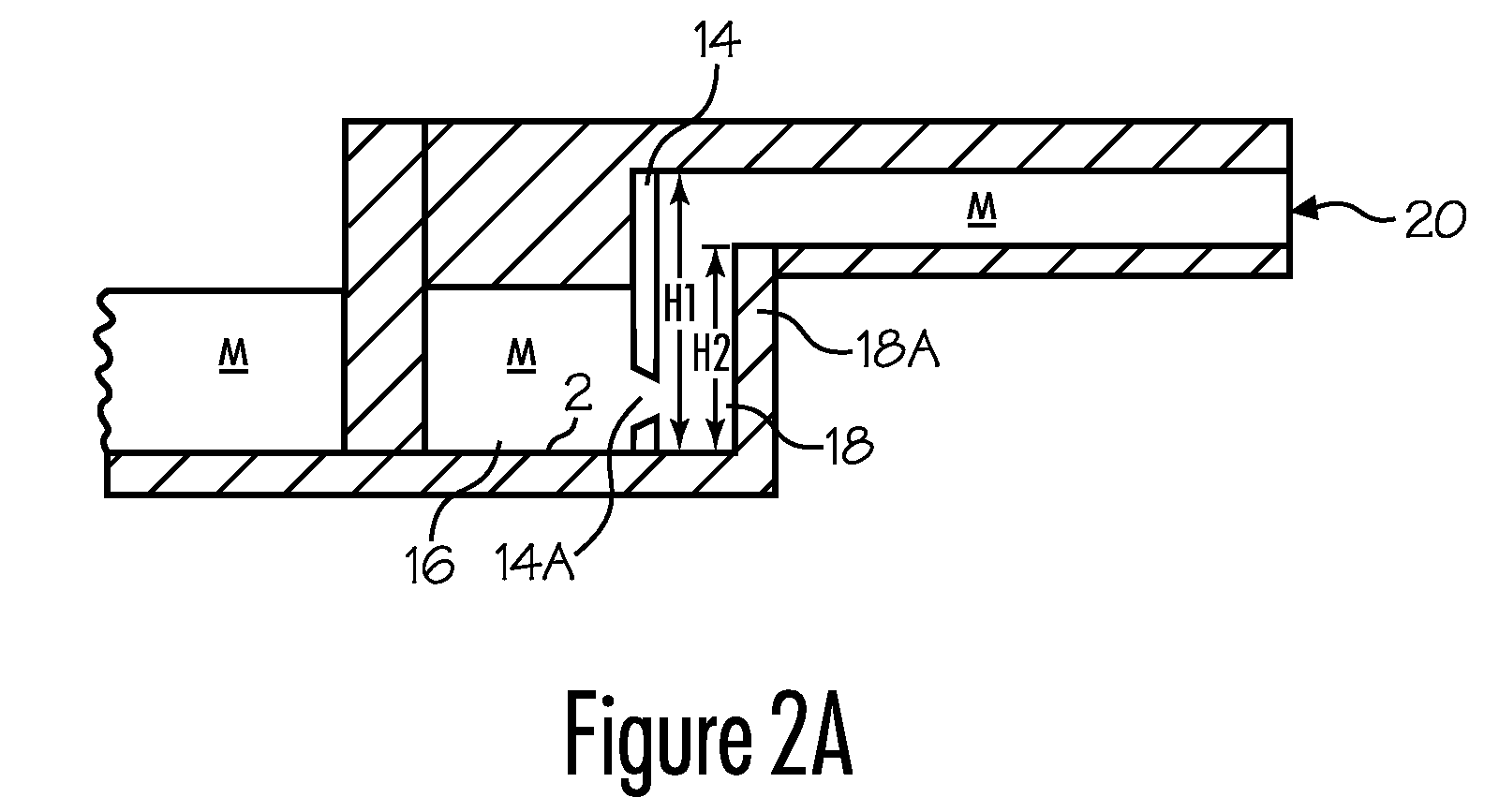Transferring molten metal from one structure to another
a technology of molten metal and structure, applied in the direction of manufacturing converters, charge manipulation, furnaces, etc., can solve the problems of molten metal interfering more, safety hazards, use of most transfer pumps, etc., and achieve the effect of greatly reducing the risk of splashing and the formation of dross in the ladle or laundering
- Summary
- Abstract
- Description
- Claims
- Application Information
AI Technical Summary
Benefits of technology
Problems solved by technology
Method used
Image
Examples
Embodiment Construction
[0044]Turning now to the Figures, where the purpose is to describe preferred embodiments of the invention and not to limit same, FIGS. 1-3A show a system 10 for transferring molten metal M into a ladle or a launder 20. System 10 includes a furnace 1 that can retain molten metal M, which includes a holding furnace 1A, a vessel 12, a launder 20, and a pump 22. However, system 10 need only have a vessel 12, a dividing wall 14 to separate vessel 12 into at least a first chamber 16 and a second chamber 18, and a device or structure, which may be pump 22, for generating a stream of molten metal from first chamber 16 into second chamber 18.
[0045]Using heating elements (not shown in the figures), furnace 1 is raised to a temperature sufficient to maintain the metal therein (usually aluminum or zinc) in a molten state. The level of molten metal M in holding furnace 1A and in at least part of vessel 12 changes as metal is added or removed to furnace 1A, as can be seen in FIG. 2.
[0046]For expl...
PUM
| Property | Measurement | Unit |
|---|---|---|
| area | aaaaa | aaaaa |
| length | aaaaa | aaaaa |
| length | aaaaa | aaaaa |
Abstract
Description
Claims
Application Information
 Login to View More
Login to View More - R&D
- Intellectual Property
- Life Sciences
- Materials
- Tech Scout
- Unparalleled Data Quality
- Higher Quality Content
- 60% Fewer Hallucinations
Browse by: Latest US Patents, China's latest patents, Technical Efficacy Thesaurus, Application Domain, Technology Topic, Popular Technical Reports.
© 2025 PatSnap. All rights reserved.Legal|Privacy policy|Modern Slavery Act Transparency Statement|Sitemap|About US| Contact US: help@patsnap.com



